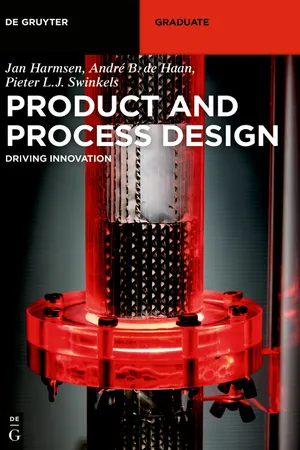
Product and Process Design
Driving Innovation
- 463 pages
- English
- ePUB (mobile friendly)
- Available on iOS & Android
About This Book
Product and Process Design: Driving Innovation is a comprehensive textbook for students and industrial professionals. It treats the combined design of innovative products and their innovative manufacturing processes, providing specific methods for BSc, MSc, PDEng and PhD courses. Students, industrial innovators and managers are guided through all design steps in all innovation stages (discovery, concept, feasibility, development, detailed engineering, and implementation) to successfully obtain novel products and their novel processes.
The authors' decades of innovation experience in industry, as well as in teaching BSc, MSc, and post-academic product and process design courses, thereby including the latest design publications, culminate in this book.
Frequently asked questions
Information

Part C: Design optimization
9Process modeling and optimization
Synopsis
9.1Justification and objectives of process modeling
Modeling objectives for process synthesis, analysis and optimization
Conceptual representation of a process: network features
Sharing a generic view on proces...
Table of contents
- Cover
- Title Page
- Copyright
- Preface
- Contents
- Authors’ biographies
- Part A: Innovation and industry
- Part B: Design generation
- Part C: Design optimization
- Part D: Education
- Index